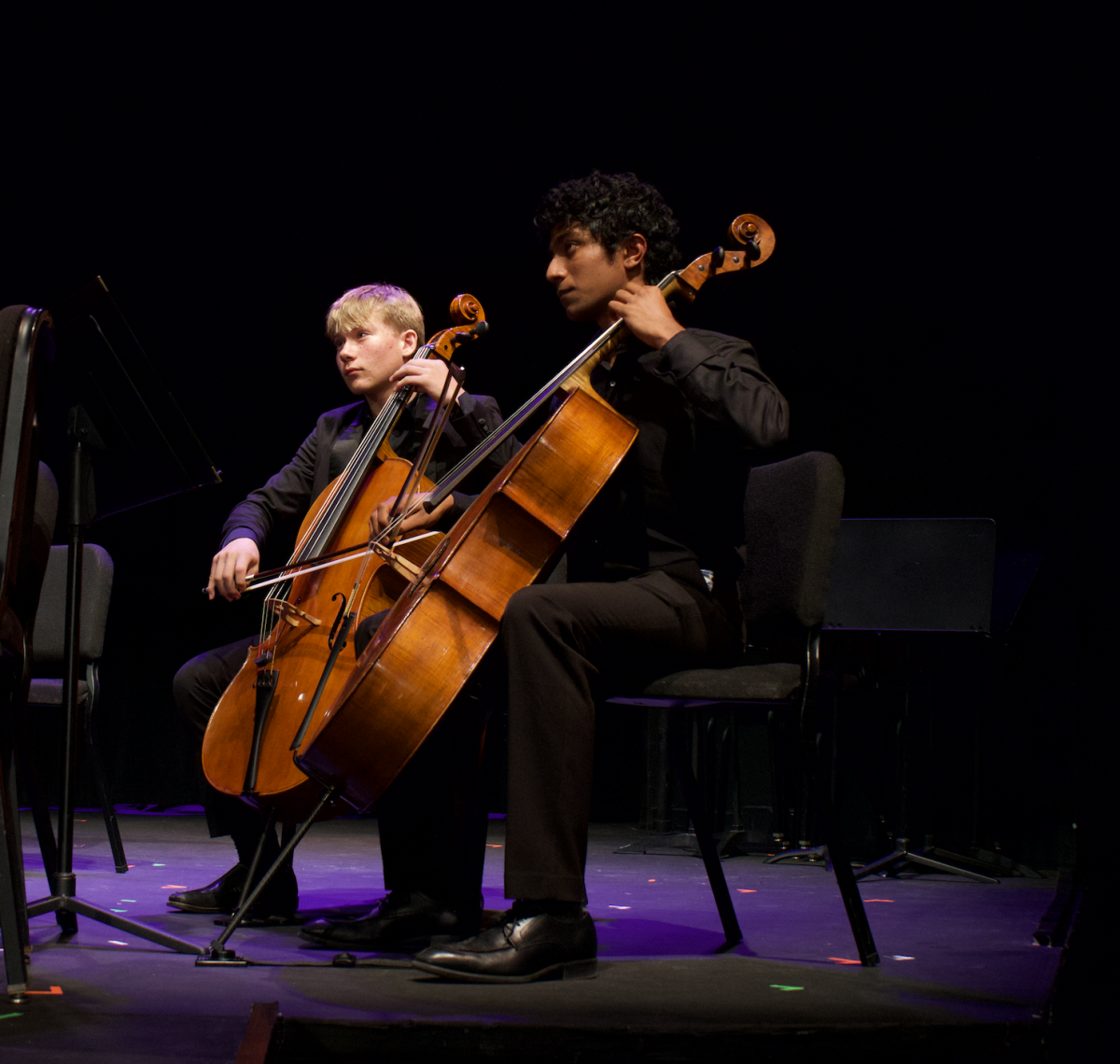Clarification, March 5, 2020: There are 93 museums in Los Angeles.
An Odd Experience
When she observed Shirin Neshat’s “I Will Greet the Sun Again” exhibition at The Broad museum in downtown Los Angeles, Kate Konvitz ’20 was deeply moved by the themes of exile, identity and beauty expressed in the art. However, as she left the exhibition, she noticed that her experience differed from those of many of the other visitors, who seemed to be there only for the photo opportunities, she said. Swarms of smiling teenagers and tourists surrounded famous installations like Jeff Koons’ shiny blue “Balloon Dog,” Yayoi Kasoma’s “Infinity Mirrored Rooms” and Robert Therrien’s “Under the Table.”
“A lot of people were under [Therrien’s] giant table installation, acting like they were really small in comparison to try to make a cool Instagram photo,” Konvitz said. “While I think taking trendy photos at museums to post on social media can be fun, I don’t think it should be the sole purpose of going to museums.”
The Los Angeles Museum Culture
Los Angeles is home to over 840 museums, according to the Los Angeles Business Journal. Together, the Getty Villa and the Getty Center drew a total of almost 3.5 million individuals in 2019, according to the Getty Fact Book 2019. With access to numerous museums in Los Angeles, Art History teacher Katherine Holmes-Chuba said she understands why individuals choose to visit these attractions in their free time.
“Some people go to museums because it is one of humanity’s ways of expressing themselves, and we’ve been doing it since before we even wrote,” Holmes-Chuba said. “I do think some people go for relaxation and stay in the Impressionist Room because it’s understandable and comfortable. Also, there’s the buzz around museums when there is a really great show that people feel they need to see.”
Research
Holmes-Chuba requires that her Art History Honors students study a work of art in person when writing their term papers because she believes the experience offers perspectives that cannot be conveyed through computer screens, she said. Emily Nutting ’20, one of Holmes-Chuba’s students, used the Getty Center as a resource for conducting research.
“When viewing a work in person, you are able to see the color, texture and size, which you are often unable to see accurately online,” Nutting said. “Being able to be in front of the work and react to it proved to be very helpful when writing my paper.”
Inspiration
Skylar Liu ’21, an aspiring artist, said she draws inspiration from the installations she visits. Liu said she prefers to spend her free time enjoying art rather than watching movies or going to the mall.
“There are so many reasons why I love museums,” Liu said. “The main one being that I love seeing different perspectives of the past and present, whether it be done consciously by the artist or is simply a product of the time. As a painter, I love going to museums for inspiration. There’s a sort of dynamic relationship that can only be achieved when viewing art in person instead of internet images.”
Artist Cleo Maloney ’21 said she visits an art museum or gallery every weekend, as she enjoys immersing herself in Los Angeles’ climate of artistic talent. Maloney said her favorite museum is the Museum of Contemporary Art, primarily because of its large Mark Rothko collection.
“I personally like to visit museums to see how different artists work,” Maloney said. “Every person has a unique experience and narrative, and oftentimes that’s expressed through their work regardless of abstraction. In many ways, it feels like I’m meeting a new person each time I see a new piece.”
Tourism
Though he is not a visual arts student, Jonathan Cosgrove ’21 said he believes that museums are important destinations for everyone. In addition to local exhibits, Cosgrove said that he enjoys exploring museums in other countries when he travels in order to expand his knowledge of the artistic world.
“I love visiting museums across the world because it is an excellent way to immerse myself in the culture of the places I visit,” Cosgrove said. “I think that museums allow non-artists like me to understand artistic trends throughout history and modern times.”
Avoiding Museums
However, some students avoid museums entirely. Mateo Dall’Olmo ’22 said he only visits art museums if he feels obligated.
“Museums are boring and there’s not much to do there,” Dall’Olmo said. “I’m usually forced to go, so it’s not like I go because I have a purpose. There are a million other things that are a better use of my time.”
Relaxation
On the other hand, Dottie Shayegan ’21 said that viewing art does not need to be the main attraction at exhibits. She said that, while living in Paris, she enjoyed visiting museums because they provided a place for her to relax as well as complete work during stressful times.
“My favorite museum is the Musée Rodin, [which showcases the words of the] French sculptor,” Shayegan said. “They turned [Rodin’s] old property in Paris into a museum and a garden. Inside, there are different exhibits, but I think the most beautiful thing [there] is the garden because it is like this oasis within the very metropolitan city of Paris.”
Shayegan, who does not participate in visual arts, said she still believes that visiting museums is valuable for students who do not take classes like Art History or Drawing and Painting.
“It’s important to surround yourself with art, especially when you spend so much time focusing on things that are good for your mind, but not for your soul,” said Shayegan. “At museums you can allow yourself to exist a little bit inside of the artists’ world as well.”





























